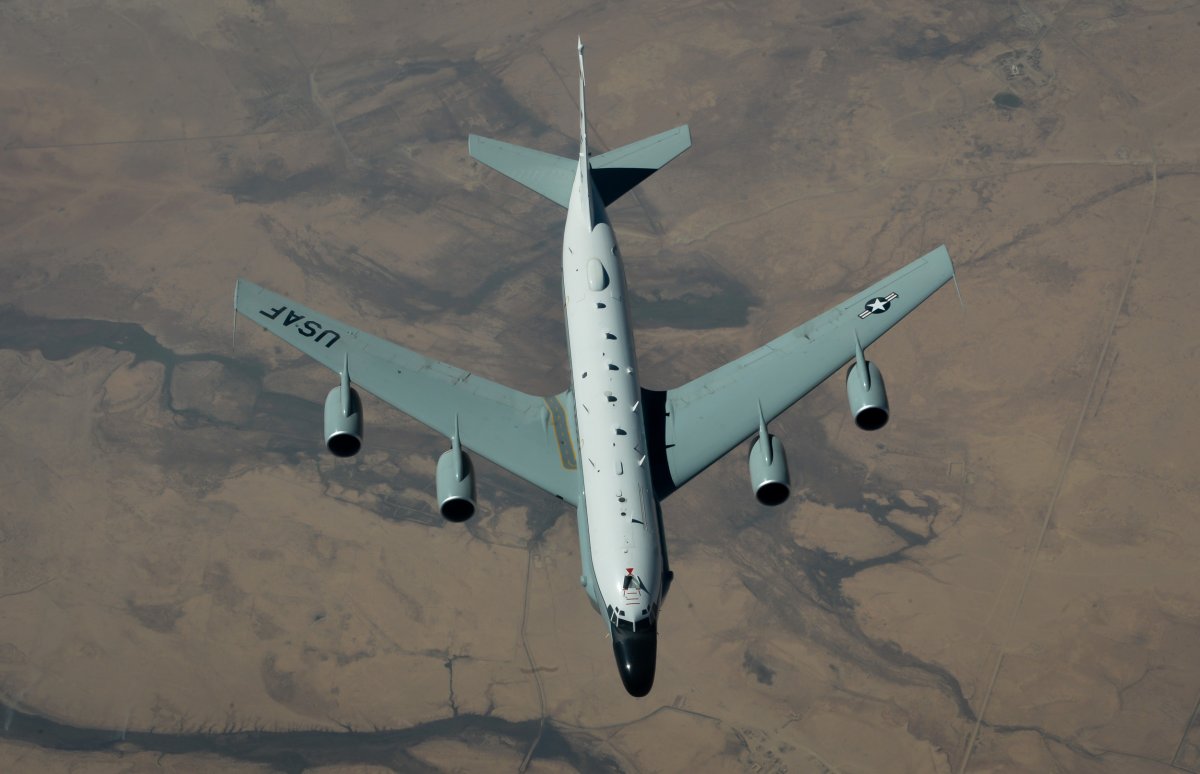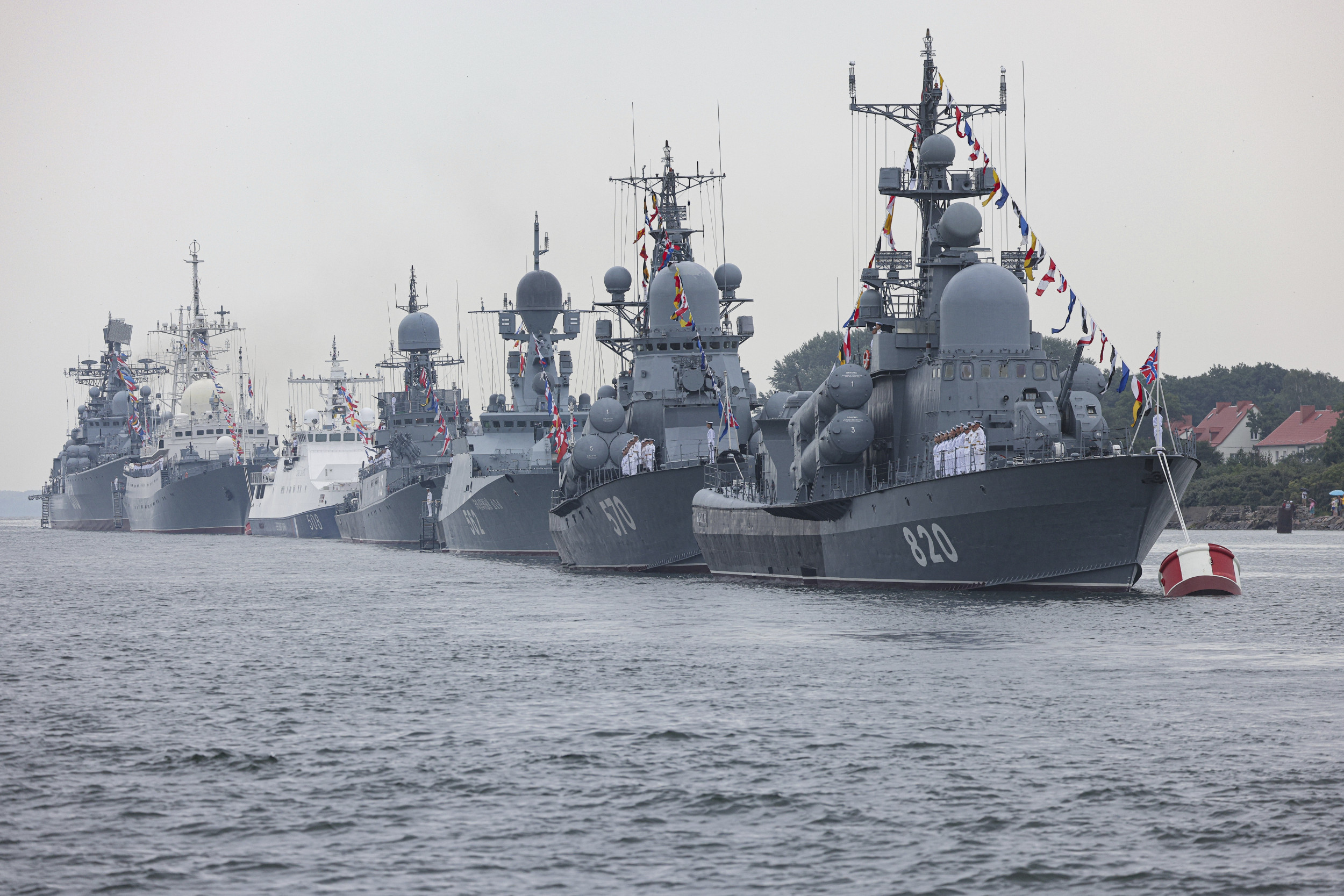Russia’s northwestern borders faced a wave of new spy flights this month as NATO ramped up surveillance to protect its expanded flank on the Baltic Sea.
GPS data captured on Wednesday by the aircraft-tracking website Flightradar24 showed a pair of American and British planes sweeping the borders of Russia’s Kaliningrad exclave, utilizing the allied airspace of Poland in the south and Lithuania in the north.
Newsweek‘s map, displaying Coordinated Universal Time, tracks the hourslong reconnaissance sorties by a U.S. Air Force RC-135V Rivet Joint, call sign JAKE17, and a Royal Air Force RC-135W Rivet Joint, call sign RRR7213, operating out of separate air bases in the United Kingdom.
They were among at least seven crewed flights in August by the allied Rivet Joints—Boeing-built signals intelligence aircraft—which were augmented by dozens of other intelligence, surveillance and reconnaissance, or ISR, missions by NATO members amid the ongoing Russia-Ukraine war.
The Baltic Sea has been nicknamed “NATO Lake” since Finland and Sweden’s accession to the alliance, but Russia’s military retains strategic access to the waters—and to the wider Atlantic Ocean beyond it—by way of Kaliningrad and the northern port of St. Petersburg, both of which host Russian Baltic Fleet bases.
NATO has raised concerns about an increase in Moscow’s “hybrid activities” on allied territory—espionage, GPS jamming and sabotage—moves that could be seen as “direct retribution” for the alliance’s decision to expand its eastern flank near Russia, according to a June report by the Wilson Center, a Washington think tank.
“By pursuing its security objectives using methods of influence that fall below the threshold of a traditional armed attack, Russia’s goal is to destabilize Allied countries without triggering NATO’s Article 5,” the authors said, referencing the treaty’s clause that provides that an attack on one alliance member would be considered an attack on all.
Russia has responded to the alliance’s intense monitoring of the front-line Baltic states—Estonia, Latvia and Lithuania—by launching its own spy flights above the waters.
NATO fighter jets were scrambled on August 10 and 12 to intercept Russian Il-20 intelligence aircraft.
The U.S. Defense Department and the British Defense Ministry typically decline to comment on specific operations. Russia’s Defense Ministry did not return multiple requests for comment.
The Royal Air Force’s three Rivet Joints are assigned to No. 51 Squadron at RAF Waddington in Lincolnshire, on the east coast of the U.K. Britain has conducted continuous intelligence, surveillance, target acquisition and reconnaissance, or ISTAR, missions since the start of the war in Ukraine.
The American Rivet Joint complementing the British sortie on Wednesday flew out of RAF Mildenhall in Suffolk in the east of the U.K. The air base, one of several used by the U.S. military, is the garrison of the U.S. Air Force’s 95th Reconnaissance Squadron.

Staff Sgt. Michael Battles/U.S. Air Force
In August, GPS data showed aircraft from both squadrons looping around Kaliningrad and scanning the western and northern borders of Russia‘s ally Belarus, which has lent its territory to Moscow during the ongoing offensive.
As in past months, the NATO air force units also have conducted long-distance ISR or ISTAR flights in or near the Black Sea, where Ukraine’s armed forces have claimed multiple successful strikes on Russian navy assets.
The sorties augment NATO’s crewed and uncrewed reconnaissance activity out of U.S. Naval Air Station Sigonella, on an Italian air force base in Sicily. The missions typically utilize Romanian airspace near the port city of Constanta.
Russia’s two-year invasion of Ukraine took an expected turn earlier this month when Kyiv’s forces said they had captured parts of the Kursk region across the border.
The Ukrainian incursion since August 6 represents the most significant attack on Russian soil since World War II. Kyiv suggests it is using the raid to pressure Moscow into withdrawing from its territory.

